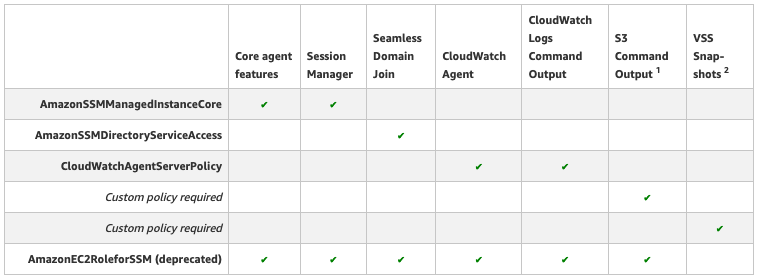AWS Cloud Operations Blog
Category: Management Tools
Keep up on the latest from AWS Organizations–Spring 2020
The team here at AWS Organizations has been busy developing new features to make it easier for you to manage multiple AWS accounts, whether you are automating new account creation, consolidating resources into a single bill, or maintaining access safeguards around your resources. There are many new announcements at AWS, so we’re starting this quarterly […]
Setting up custom AWS Config rule that checks the OS CIS compliance
AWS announced that AWS Systems Manager’s Run Command now offers Chef InSpec audits through the AWS-RunInspecChecks document. This is a significant win for Systems Manager enthusiasts and other users who prefer an OS-based compliance check solution rather than using a whole new cloud service. This blog post is not about how to keep an OS […]
Governance, risk, and compliance when establishing your cloud presence
June 22, 2021: We’ve updated this post to reference the recently published Management & Governance Lens, an extension of the AWS Well-Architected Framework. When speaking with the business and technology leaders I work with, they express the need to bring new products and services to market quickly. They must also stay secure while doing so. […]
Applying managed instance policy best practices
Since AWS Systems Manager was launched, the service has continued to add new features for customers to use. Many features are enabled by granting your Amazon EC2 instances and on-premises servers access to Systems Manager using an AWS Identity and Access Management (IAM) role with the necessary permissions. To provide customers more flexible, fine-grained permission […]
Monitor your private internal endpoints 24×7 using CloudWatch Synthetics
Introduction Since Amazon CloudWatch Synthetics launched in 2019, Synthetics canaries have become the first line of defense to reliably alert developers if their public endpoints, including REST APIs and URLs, show unexpected latencies or availability drops. In addition, Synthetics canaries can also monitor for broken links, or unauthorized content changes resulting from phishing, code injection, […]
Send Organizational AWS Health Events to Amazon Chime or Slack
There’s now a much easier solution! Please see our blog post on AWS Health Aware – Customize AWS Health Alerts for Organizational and Personal AWS Accounts. Receiving notifications for AWS Health events can be done in multiple ways depending on your desired platform, from email notifications with Amazon SNS to account-specific chat notifications with AWS […]
Creating event-based notifications and remediation in AWS Service Catalog using AWS Config
AWS Service Catalog allows organizations to quickly let their users deploy approved IT services to organize, govern, and provision cloud resources on AWS. However, users launching multiple instances can cause issues because: Some instances are not always active. The lack of limits on the number of active instances can result in an organization’s costs going […]
Automate RDS Aurora Snapshots for disaster recovery
It is important to have a well-defined proactive disaster recovery strategy for efficient and uninterrupted flow of data across an organization. This applies to all components of your application architecture, including the database layer. While Amazon Aurora database clusters are fault-tolerant and highly available by design, for disaster recovery use cases, customers prefer to keep […]
Deploy Enterprise Proof-of-Concept with prooV and AWS Service Catalog
Deploy Enterprise Proof-of-Concept with prooV and AWS Service Catalog Proof-of-concept testing is a must-have practice for enterprise application development teams for decision making regarding technology adoption. With the elasticity and scalability provided by the cloud, it’s more important now than ever to predict and understand application behavior in a real-world scenario. Before releasing a new […]
AWS Config best practices
AWS Config is a service that maintains a configuration history of your AWS resources and evaluates the configuration against best practices and your internal policies. You can use this information for operational troubleshooting, audit, and compliance use cases. In this blog post, I share best practices on how to use AWS Config as a tool […]









